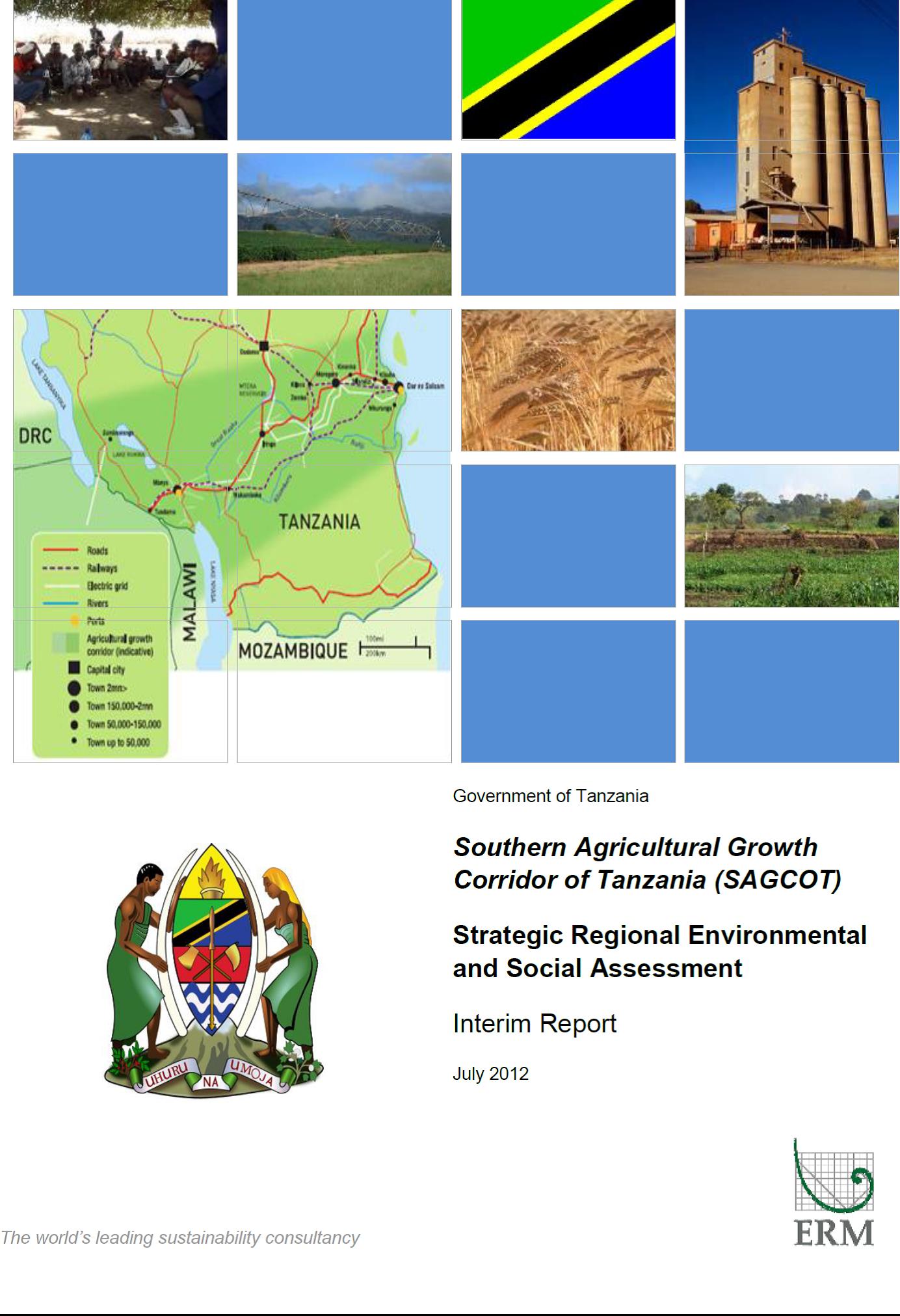Focal point
Location
The Southern Agricultural Growth Corridor of Tanzania (SAGCOT) is an agricultural partnership designed to improve agricultural productivity, food security and livelihoods in Tanzania. It was initiated at the World Economic Forum Africa summit in May 2010, following which the SAGCOT Investment Blueprint was launched nationally by Prime Minister Pinda in Dar es Salaam and internationally by H.E. President Kikwete at the 2011 World Economic Forum in Davos. The Investment Blueprint showcases investment opportunities in the Corridor and lays out a framework of institutions and activities required to reap the development potential.
Members:
Resources
Displaying 16 - 20 of 26The SAGCOT Greenprint
A Green Growth Investment Framework for the Southern Agricultural Growth Corridor of Tanzania
Southern Agricultural Growth Corridor of Tanzania (SAGCOT)
This Interim Report has been prepared mid-way through the study as a record of the study team's initial findings and as a roadmap for completion of the assessment.
G8 Cooperation Framework to Support "the New Alliance for Food Security and Nutrition" in Tanzania
Three years after the G8 Summit at L’Aquila, Italy, the international community recognizes the importance of food security to development, inclusive economic growth and the dignity of all women and men. In that spirit, we welcome the success of the Comprehensive Africa Agriculture Development Program (CAADP) in demonstrating African ownership and leadership, its call for expanded public and private investment in agriculture and desire to build on the progress that African governments have made in advancing a vision for agricultural development in Africa.
Southern Agricultural Growth Corridor of Tanzania
This appendix takes output from the production and investment model and sets out further detail on the development profiles of each of the six clusters, providing projections of on-farm investment, last mile infrastructure, and necessary supporting agriculture and backbone infrastructure. From this, it details the resulting gross revenue and developmental impact of that investment
Southern Agricultural Growth Corridor of Tanzania
The paper highlights different early win opportunites for investors specific in the SAGCOT region






